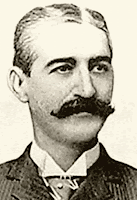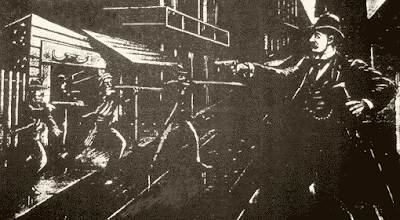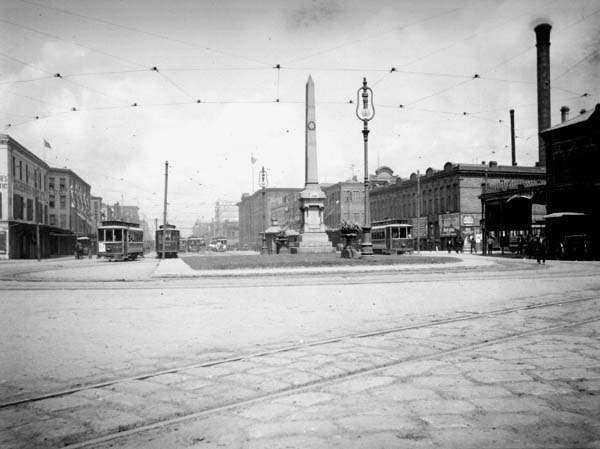Hennessy attended a meeting of the city's police commission during the early evening of October 15. The meeting broke up at about nine o'clock. Hennessy was driven back to police headquarters at the southwest corner of Common (Tulane Avenue) and Basin Streets. Captain William O'Connor of the private Boylan Protection Agency met him there to escort the police chief home. Hennessy, perceived as a partisan in a local underworld feud, received a number of death threats from the local Mafia. City fathers hired the Boylan agency to keep him safe.
 |
| Hennessy |
While Basin Street was the most direct route between Hennessy's office and his home on Girod Street, heavy rains of earlier in the day had caused some flooding in the area. Hennessy and O'Connor took a significantly lengthier route, riverward on Common Street and then up Rampart Street to the intersection with Poydras Street. At that corner, the two men stopped into Dominick Virget's Oyster Saloon for a late snack. A teetotaler, Hennessy had a glass of milk with his plate of oysters.
At eleven-thirty, the men stepped out of Virget's and continued up Rampart Street. They paused in front of the McDonough schoolhouse at the corner of Rampart and Girod, about one and a half city squares from Hennessy's home. O'Connor said goodbye to Hennessy at that point, though he had been assigned with seeing the chief all the way home. O'Connor crossed the intersection diagonally to his left - his intended destination is unknown - while Hennessy turned right on Girod.
The chief took only a few strides and then halted as a young man darted out of a Girod Street doorway and ran toward Basin Street whistling loudly. The youth turned right onto Basin and disappeared around the side of Mrs. Ehrwald's second-hand store.
 |
|
The assassins' first shots were fired from beneath this shed roof |
Two shadowy figures stepped into Girod Street. Illuminated by a streetlamp and within sight of some residents whose attention was caught by the gunshots, they advanced toward the fallen police chief. They fired large-caliber slugs into Hennessy's midsection and then ran off.
Mortally wounded, Hennessy managed to rise to his feet. He stumbled a few yards in the direction of home. At the corner, he turned onto Basin. He dragged his disabled leg just a few more paces and collapsed onto the front steps of No. 189 Basin Street. Captain O'Connor, at most only a single square away when the gunfire erupted, somehow reached the chief's side far too late to fulfill his function as bodyguard.
"They gave it to me," Hennessy gasped, "and I gave it back the best I could."
O'Connor asked if the chief could identify his attackers. Hennessy reportedly replied, "Dagoes."
- - -
Hennessy died before he could provide any additional identification of his killers. Suspected Mafia members and associates were arrested and charged with conspiring in the assassination of the police chief. Nine men, including New Orleans-born businessman Joseph P. Macheca, were the first to be brought to trial early in 1891.
Captain William O'Connor, who should have been the prosecution's key witness in the case, was never called to testify. O'Connor might have explained the timing and the route of Hennessy's walk home, factors that brought him late at night into a well-planned ambush. The captain also might have explained his own fortuitously timed departure from the chief's side - just seconds before the shooting began - and his slow return to the chief after the shooting had finished and the assassins had run off.
None of the accused men were convicted. Six of those tried, including Macheca, reputed Mafia boss Charlie Matranga, and Asperi Marchesi, the boy-lookout who whistled upon the arrival of Hennessy, were acquitted. The jury could not reach a verdict for three other defendants identified by witnesses as shooters of the police chief. After the trial, some jurors revealed that they had been concerned that Captain O'Connor did not testify.
Angered by the jury verdict, a mob stormed Orleans Parish Prison on the morning of March 14, 1891, and murdered Macheca and ten other prisoners.
- - -
Read more about Police Chief Hennessy
and the early Mafia of New Orleans:
Deep Water:
Joseph P. Macheca and the Birth of the American Mafia
by Thomas Hunt and Martha Macheca Sheldon
(Available in softcover and Kindle e-book formats)









